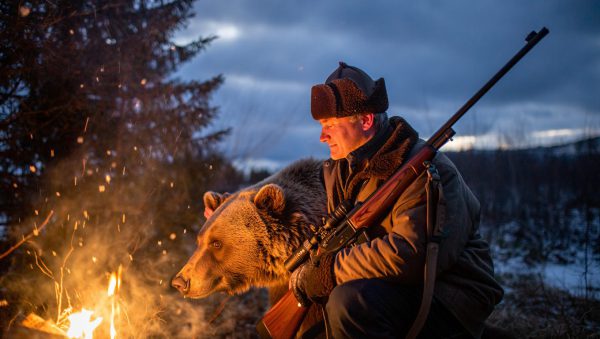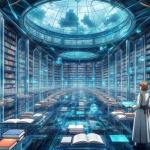Introduction: The Icy Edge of Economic Fate
May 5, 2025
The phrase Kondratieff winter 2018 conjures images of economic blizzards—deep freezes where optimism dies and cycles unwind. But this is no ordinary winter. It is a crucible, a stress test for the collective mind. Here, mass behaviour, cognitive bias, and the raw mechanics of boom and bust collide in a spectacle of human folly and brilliance. What happened in 2018, and what stormfronts followed, is not mere history—it’s a living lesson in how crowds think, panic, and sometimes, brilliantly adapt.
Kondratieff winter 2018 didn’t just freeze portfolios; it froze assumptions. Optimists were forced to reckon with the brutal reality that economic cycles are never tamed, only temporarily lulled. The chill ran deeper than asset prices—it crept into boardrooms, political summits, everyday conversations about work, money, and security. This winter, far from being a sudden event, was the slow accretion of risk, denial, and misplaced faith. It was a punishment for years of collective delusion, a reckoning that spared neither the sophisticated nor the naive. And as the world shivered, the boundaries of rationality shrank, exposing the primal instincts that drive every market—fear, greed, and the irresistible urge to follow the crowd when the going gets tough.
Mass Psychology: The Crowd as Avalanche
In the depths of Kondratieff winter 2018, the market was a herd on thin ice. Euphoria curdled into dread. Investors who once worshipped the bull now trampled each other toward the exit. The cycle was brutal, but predictable. Fear, that most primal of triggers, became viral. Algorithms sniffed out volatility; headlines amplified every tremor. The paradox is clear: the more we monitor the system, the more we destabilize it. Herd mentality, in economic winters, does not just reflect reality—it invents it.
The crowd moves as a single organism, its nervous system wired for contagion. During Kondratieff winter 2018, market sentiment didn’t just swing—it convulsed. Panic spread through social media at the speed of light, echo chambers amplifying the shrillest warnings until they mutated into self-fulfilling prophecies. The sell-off became a ritual, the stampede an inevitability. This was not about fundamentals or rational analysis; it was about survival. The market’s collective psyche, battered by each new shock, spiraled further from reality with every passing headline. It was an avalanche not of snow, but of sentiment—where even the strongest were swept away if they paused, hesitated, or dared to question the stampede’s direction. In this phase, the market’s greatest risk was not the numbers, but the narratives.
Cognitive Bias: The Blind Spots That Freeze Us
Kondratieff winter 2018 exposed humanity’s stubborn refusal to see what lurks beneath the surface. Anchoring bias kept investors chained to yesterday’s highs. Confirmation bias made us devour only the news that soothed, never what threatened. The recency effect blinded strategists to the enormity of historic cycles. In the unforgiving chill of these winters, the crowd’s greatest weakness is not ignorance, but selective amnesia. The market’s memory is short, its risk appetite fickle, and its ability to learn from collapse dangerously limited.
Bias is the hidden ice beneath our feet. In 2018, even the most seasoned players fell victim to their own minds. Investors clung to narratives that validated their positions, ignoring mounting evidence of systemic stress. Every minor rally was seized as proof that the worst was over, while warning signs were dismissed as noise. This blindness wasn’t accidental—it was a defence mechanism, a refusal to accept that the world had changed.
Meanwhile, institutional groupthink compounded the problem, as analysts and commentators recycled old wisdom that no longer applied. The result: mass self-deception, a chorus of false confidence that left portfolios exposed and strategies obsolete. Those who survived were not the smartest, but the most adaptable—those willing to challenge their own beliefs and face the uncomfortable truths lurking beneath the market’s icy surface.
Contrarian Boldness: Thriving at the Fringes
But where the crowd panics, the contrarian sharpens their blade. The essence of surviving (and profiting from) Kondratieff winter 2018 was not found in consensus, but in edge cases. When central banks and pundits screamed apocalypse, the visionary hunted anomalies: distressed assets with hidden value, signals of resilience masked by noise. Contrarian investors read the cycle not as a closed loop but as a spiral—each downturn a new opportunity for bold, tactical entry. They understood that the true extremes—utter despair, rampant pessimism—are the breeding grounds for generational wealth.
Contrarianism is not mere defiance; it is calculated courage. In Kondratieff winter 2018, the bravest didn’t just survive—they thrived by seeking the places everyone else feared to tread. These were not reckless gamblers, but disciplined tacticians, recognising that markets overshoot in both directions. When fear reached its zenith, they began accumulating positions in assets others had abandoned. They saw opportunity in despair, arbitrage in chaos, and value in volatility. This approach required more than financial acumen—it demanded emotional resilience, patience, and a willingness to be mocked or dismissed by the mainstream. The contrarian’s edge lay in understanding that markets are not efficient machines, but capricious crowds, prone to overshoot and correction. By embracing the discomfort of being out of sync, these investors positioned themselves for recovery and transformation.
Technical Analysis: Fractals in the Frost
Charts in Kondratieff winter 2018 were less about patterns than about psychology—self-fulfilling prophecies etched in candlesticks. Technical analysis morphed into a battleground of adaptive indicators: volatility clusters, sudden divergence in momentum, breakdowns and rebounds that defied classic models. Machine learning tools, like neural oscillators and adaptive moving averages, became the sentinels at the edge—detecting inflection points invisible to the naked eye. Yet the greatest insight was paradoxical: the more advanced our tools, the more vital it is to interpret them through the lens of mass emotion.
Traditional technical analysis faltered in the face of Kondratieff winter 2018’s wild dynamics. Old-school moving averages and RSI indicators produced whipsaws rather than clarity. The environment demanded new tools—algorithms that could adapt to shifting volatility, neural network-driven oscillators that could filter out noise, and multidimensional models that mapped not just price, but sentiment and liquidity. But here’s the twist: even the best tools were only as effective as the mind interpreting them. Charts became psychological battlegrounds, each move reflecting not just fundamentals, but the mood swings of millions. The real skill was not drawing lines, but sensing when the crowd’s fear or greed would overtake reason. In this frozen landscape, the sentinel investor learned to read both the data and the emotional currents swirling beneath it, blending science with intuition to anticipate not just what the market was doing, but why.
Paradox and Emergence: When Collapse Seeds Renewal
Kondratieff winter 2018 was not merely destruction—it was the crucible for rebirth. The paradox at the heart of every long cycle: collapse is both ending and beginning. The seeds of tech resurgence, the slow thaw of new credit cycles, and the radical rebalancing of global capital flows all germinated in the frost. It is at the edges—where models break, where sentiment is irrational, where history appears to be repeating but never quite does—that real change emerges. The interplay between mass fear and contrarian courage forges the path out of winter.
This is the true alchemy of economic cycles: winter devastates, but it also purifies. In the wreckage of Kondratieff winter 2018, failed institutions were swept away, clearing space for new innovation and risk-takers. The paradox is sharp—each collapse sows the ground with the possibility of renaissance. Markets, like ecosystems, require periodic fires to clear deadwood and release dormant seeds. Out of chaos, new leaders emerge—businesses that adapt, technologies that disrupt, and investors who learn to harness uncertainty. This emergence is not linear; it is messy, unpredictable, and often violent. Yet it is precisely at these points of maximum stress that real progress is forged. Those who can surf the turbulence, who see not just the destruction but the blueprint for renewal, become the architects of the next cycle.
What Came Next: Lessons from the Thaw
In the aftermath of Kondratieff winter 2018, the world didn’t simply recover—it mutated. A new breed of investor, hardened by chaos, rose from the ashes. Old doctrines fell away; new tactics, rooted in complexity and adaptability, took hold. Markets became more reflexive, more sensitive to narrative and collective emotion. The cyclical winter taught that the only constant is change, and that edge cases, not averages, shape the future. As economies emerged from the deep freeze, those who had mastered the interplay of cycle, crowd, and contrarian thinking led the charge.











